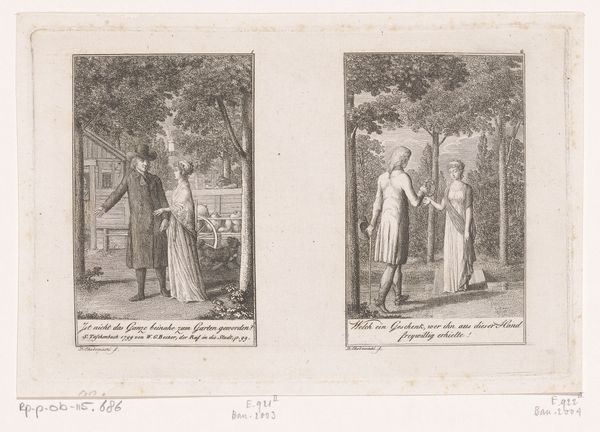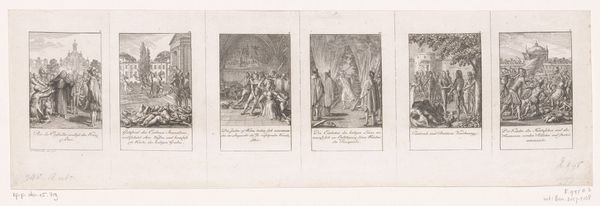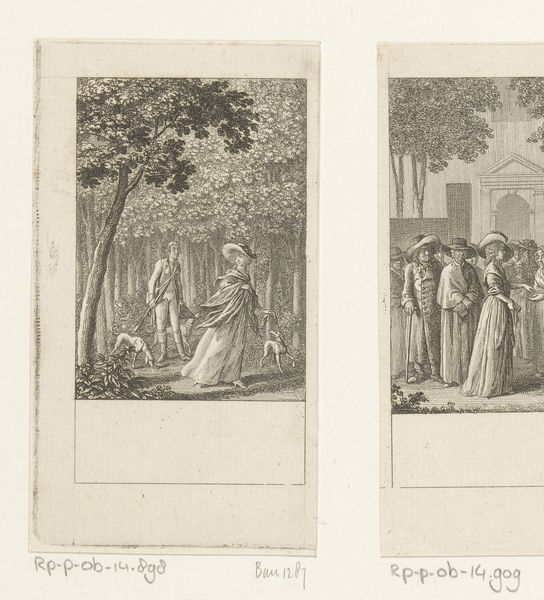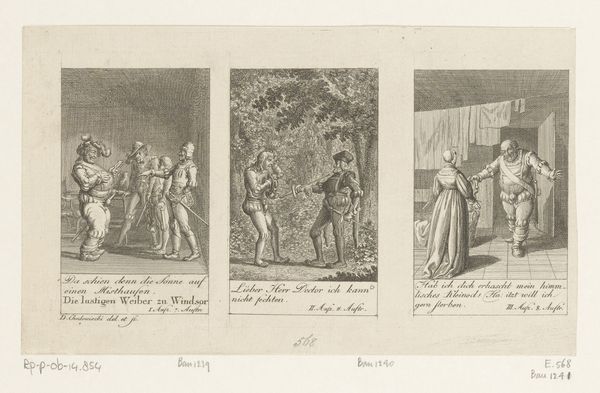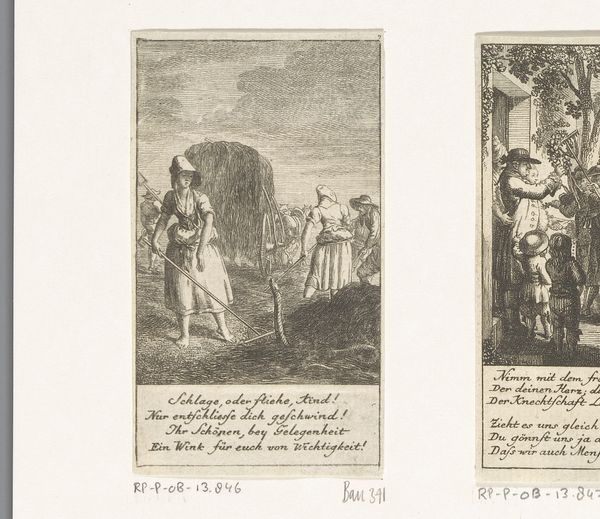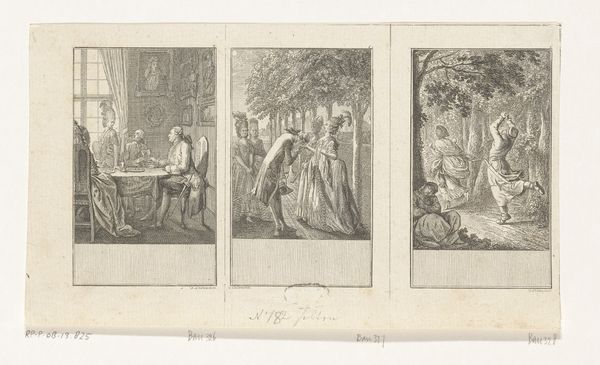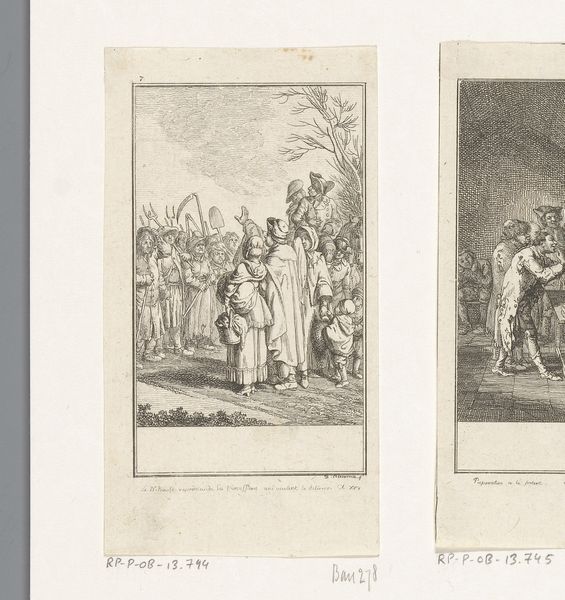
Dimensions: height 110 mm, width 398 mm
Copyright: Rijks Museum: Open Domain
Curator: Before us we have "Six scenes from Shakespeare's Macbeth," created in 1784 by Daniel Nikolaus Chodowiecki. It is an engraving, housed here at the Rijksmuseum. Editor: It strikes me immediately as very narrative-focused. It almost resembles a storyboard, with the small frames. There's a distinct visual cadence between light and dark spaces within it. Curator: Precisely, and each scene isolates specific symbolic moments from the play. Note how the figures, even amidst violence, are rendered with an almost neoclassical restraint. There's a calmness here that speaks to the enduring power of classical forms even within dramatic narratives. The symmetry reinforces stability. Editor: And yet, placing these images within a larger frame—thinking of Shakespeare's own sources—the play wrestles with political ambition, and the fracturing of social order. Looking at the first frame, that central figure conveys so much tension – that feeling of moral reckoning and the looming shadow of one's deeds… Curator: It evokes an entire worldview. Consider the role of prophecy depicted in the second panel with the three witches: prophecy isn’t about seeing the future. The Wyrd sisters' prophecies show an internal tension in Macbeth already – the prophecy acts as permission rather than truth, for an idea already inside. We see it reflected in these faces throughout this print – the power of suggestion as an engine. Editor: Absolutely, and suggestion carries different weight depending on who benefits. Duncan's murder by Macbeth directly resulted in massive political disruption in Scotland in the 11th century. Power structures matter. Curator: Each scene chosen for rendering then emphasizes how suggestion, and self-deception, leads to downfall. Notice too how Chodowiecki frames Macbeth's internal turmoil through exterior events, battles, meetings – showing, perhaps, how closely entwined the psychological and social realms become. Editor: These scenes are indeed charged with so many implications, especially the banquet. The political dimension in that panel cannot be dismissed. Thank you. Curator: Yes, looking at this print we witness how visual representation becomes its own unique form of interpretation.
Comments
No comments
Be the first to comment and join the conversation on the ultimate creative platform.
